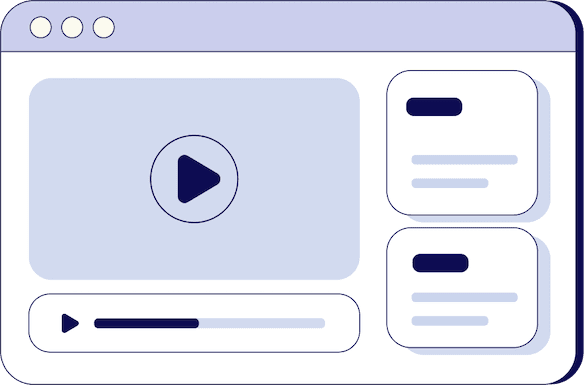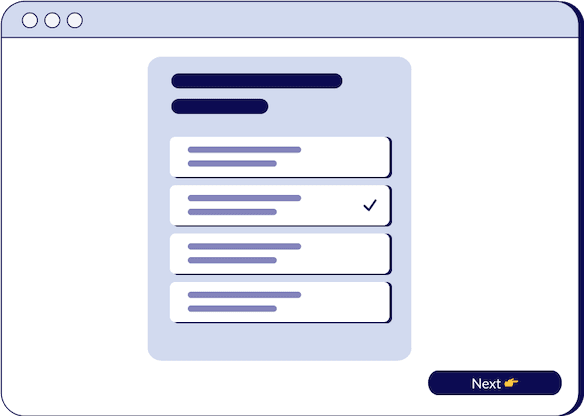
Requalifying Closed Lost Opportunities
Matt Doyon
Chief Executive Officer @ Triple Session

- duration
- 7 min
- Average Score
- 79%
- Stars
- 5
As a sales representative, one of the most valuable opportunities we can encounter is a second chance to win back a lost deal. These lost opportunities that come back around can be some of the most lucrative deals we work on. However, it is crucial that we don't make the biggest mistake in this situation – skipping the re-qualification process.
Reps often overlook the re-qualification step, assuming that since they had already qualified the prospect in the past, they can simply jump ahead to discussing product and pricing. This is a grave mistake that can result in another lost opportunity. We cannot take for granted where we stand in the sales process. It is essential to go back to the beginning and re-qualify effectively. In this article, we will explore the importance of re-qualification and provide insights into the re-qualification process.
The Foundation: Having a Qualified Champion
Before diving into the re-qualification process, it is crucial to have a qualified champion in the deal. This can either be a champion from the last attempt or someone you have recently invested time in building a relationship with. A champion is someone who collaborates with you and supports your solution. Without a champion, the chances of successfully re-qualifying a lost opportunity significantly decrease.
Reactivating the Conversation: Starting with Value
When reactivating the conversation with a lost opportunity, it is essential to start with a logical moment that is value-based in the customer's world. This means focusing on the problem, opportunity, or challenge that the customer faced the last time you tried to sell them. You need to reconfirm whether the situation persists and if it is still relevant. This allows you to understand why the prospect believes solving this problem is a priority.
To uncover the current state of the problem or challenge, you should start with situation questions. These are the same type of questions you would ask in an initial discovery meeting. Find out why the problem still exists, what has happened since the last conversation, and whether they have attempted a solution. If they haven't solved the problem, ask them why it is still a concern and why they believe it is essential to address it now. Quantifying the problem and understanding the cost of inaction will help you establish the value and urgency of your solution.
Learning from Past Mistakes: Uncovering the Roadblocks
To avoid repeating history, it is crucial to uncover why the previous attempt ended in a closed-lost conversation. Reflect on and understand what went wrong. Review your notes from the past and identify who killed the deal and why. Assessing the roadblocks that led to the previous failure allows you to devise a new strategy that addresses those challenges.
For example, let's consider a scenario where you were trying to sell ad services to a lawyer who wanted more H1B visas for their immigration law firm. The lawyer initially declined the offer, citing competitiveness as a factor. However, through nurturing and continuous communication, you discovered that the lawyer was hiring new staff, indicating growth in the firm. This presented an opportunity to re-engage the lawyer by highlighting the relevance of the H1B visas for the new hires. By reframing the conversation around their specific needs, you successfully closed the deal.
The Power of Value-Based Understanding
Requalification of a closed-lost opportunity demands revisiting the pain points, gaps, and relevancy of the solution. By exploring the problem and its implications, you can reconnect with the prospect on a value-based level. The decision to re-engage will depend on how effectively you convey the value of solving their problem. It is crucial to speak their language and demonstrate an understanding of their specific challenges. By focusing on the value and benefits your solution can provide, you increase the likelihood of a successful engagement.
Requalifying closed-lost opportunities is an essential step in the sales process that should never be overlooked. These opportunities hold immense potential for success, but only if we re-qualify effectively. Begin by having a qualified champion who will collaborate with you and support your solution. Reactivate the conversation by focusing on the value-based logical moments that persist in the customer's world. Understand the current state of the problem and its significance by asking relevant situation questions. Learn from past mistakes and uncover the roadblocks that led to the previous closed-lost outcome. Lastly, present the value of your solution clearly and concisely to reignite the prospect's interest.
Remember, practice makes progress. Embrace the re-qualification process with diligence and commitment, and you shall unlock the doors to previously lost opportunities. Good luck on your journey of re-qualifying closed-lost deals! If you want to explore more sessions about working closed lost opportunities, check this other session.
How Triple Session works
Training, Testing, & Feedback
Triple Session's proven formula accelerates your sales performance through consistent, organized practice, backed by measurable results.

Bite-Sized Knowledge
Our expert-led video sessions simplify complex sales concepts into easy-to-digest 5-15 minute videos for better retention.

Test Your Understanding
After each session, there will be a quiz to test your understanding and help you improve on any areas that need more attention.

Evaluate and Grow
Get progress snapshots after each quiz to track your improvements and achieve your sales mastery goals.